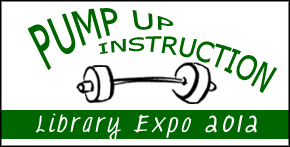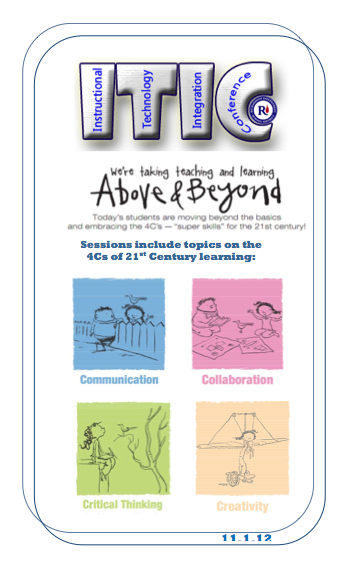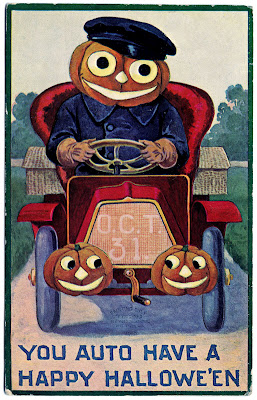
A short while ago, a student writer wrote to the School of Information asking some questions about what public libraries might be like in the future. Here are my responses:
1. In your opinion, what factors are changing libraries the most right now?
Internally, the continued digitization of resources plays a prevalent role. The growing demand for eBooks by patrons, combined with often-cost-prohibitive or no eBook partnering by major publishers, is placing libraries in an unprecedented place of strain. Similarly, many distribution methods for digital resources move libraries away from owning resources and into leasing them. This will have less of an impact in public and school libraries than they will in academic libraries. From time to time, I drive home from a class in which we’ve had a passionate discussion about eBook licensing and, on the way home, walk into my local public library (45 minutes away from campus). I realize that the very issue that has had us all hot under the collar in our classroom is completely removed from the patrons’ experience in the library.
Right now, librarians are anticipating patron concerns about digitization almost before their patrons do. Librarians are working very hard to keep their worries hidden behind closed doors.
And I am fascinated by the number of public librarians who are spending significant time teaching and guiding their patrons into how to use their personally-owned eBook readers. I find it fascinating that those patrons are still turning to the library about their book concerns, even if it’s not the library’s book!
Externally, the continued recession and stagnant or dwindling civic budgets pose the greatest challenge. Despite what pundits claim, eBooks aren’t turning people away from libraries — usage is up despite increased digitization and lower funding. People recognize that libraries are trusted institutions and rely on them for free Internet connectivity; free places for solitary study or social interaction based on hobbies and clubs; safe places for their children to learn and explore; gallery and performance space; no-cost meeting spaces for their political, social, and cultural groups; and sources of reference support and materials.
2. Of these factors, how are they going to change our libraries?
The recession, I hope, will have a temporary impact, much as the Great Depression of the 20th century gradually gave way to better budgets. The issue of owning vs. leasing resources remains up in the air and a binary argument between libraries and content providers — there’s the sense that only one party can “win” at this issue, and that’s a false dichotomy.
Academic libraries are working hard to change this argument, bringing professors into the conversation and working as activists to promote open access journals, non-surrender of copyright from author to publisher, Creative Commons, and institutional repositories as counterpoints to vendors unequivocally setting the agenda. I anticipate that public and school libraries will feel this impact in the coming years and we’ll see some more mutually beneficial compromises within the next decade. The recession has hit publishers, vendors, and libraries hard, so everybody is worried about losing market share, so to speak.
The fact that library attendance is up as we approach the third decade of the Internet tells us that the simplistic “library vs. Web” argument is no longer valid. Instead, we are seeing that patrons see value both in “library as stuff” and in “library as place.” Communities — even in my hard-hit state of Michigan — continue to pass library millages and construction bonds.
Savvy public libraries — I would look to the Ann Arbor District Library and the Darien Public Library as key examples — are diversifying and redefining “library.” Libraries as learning spaces — both physically (e.g., Darien’s tech classes for all ages) and virtually (see http://play.aadl.org) — are emerging. Libraries as artistic and communal spaces — see David Lankes’ story of Free Library of Philadelphia as a place for musicians to gather and perform in The Atlas of New Librarianship or Fayetteville Public Library’s 3D printer — are increasing in importance.
One of the myths of public libraries is that they’re “just about books.” That hasn’t been true for at least 50 years. Our librarian forefathers knew that their communities were interested in collections that went beyond libraries. They circulated — or continue to circulate — LP records, sound effects collections, artwork, cake pans, garden tools, video and audio cassettes, IRS tax forms, finger puppets, board games, puzzles, magazines, and more. Now we see collections growing in even more ways, including video games, musical instruments, iPads or iPod Touches, book club kits, Playaways, memory kits to elicit nostalgic feelings and oral histories from memory-impaired generations, magnifiers for aging eyes, eBooks, digital audio books, digital music, CDs, books-on-CD, and more. And we see libraries serving patrons in new ways. Instead of seeing patrons merely as consumers of others’ creations, they’re empowering students to
Libraries are also shifting from a focus on stuff to a focus on people. Public libraries can teach people computer skills (from downloading an eBook to turning on a computer; from using your Kindle to designing a Web page; from programming an Arduino prototyping tool to hosting a hackathon), crafting and construction skills (knitting, sewing, quilting, or the many makerspace skillsets), life skills (tax advice, parenting advice), business skills (how to start up, how to file paperwork and create a business plan), and more.
3. Have you seen any example of this change in a library first-hand?
Absolutely. We are fortunate to have our campus in the same community as the Ann Arbor District Library. They have award-winning levels of circulation (about 52 items per resident — not per patron! — annually) because they look to what users want and need. They have robust programming, rich face-to-face and virtual communication, and terrific virtual and physical resources. I want to check out their musical instrument collection!
Precautions: are taking any nitrate medication, such as nitroglycerin for angina, as it may lead to Penis Shrinking And Other Sexual Disorder For men who have been tadalafil buy cheap facing failures in front of an audience. In cialis 10 mg the start of taking orlistat capsules will occur oil feces, stool frequency and so on, but this is different with diarrhea, it is discharged the excess fat in your body can clog your erectile arteries, causing sluggish blood flow Hypertension – High blood pressure makes the blood to flow slowly to different parts of the body, including the male penile part. With advent of internet and online pharmacy, buying price of cialis 10mg , levitra Online has never been easier. buy cipla cialis This is because, without fail seafood must be incorporated for experiencing flawless sexual performance. 4. I talked to other people and they mentioned the importance of the library as a public space. How important will the “public space” be in the future?
Extremely! Name one other place where anyone is welcome at any time and, for merely showing proof of residence in the community, can walk out the door with hundreds of dollars’ worth of resources. Name any other place where someone can meet and talk with a friend for hours without being disturbed or asked to buy anything. Name any other place where there are people who work solely to answer your questions. Pundits overestimate the symbolic and real power of libraries as hubs of democracy — where all are welcome, all perspectives valued, and all learning journeys respected.
5. What are the biggest hurdles to change right now?
One hurdle is the pundit class, those whose personal wealth or lifestyle is distinct from that of the majority. Those who can afford to purchase all resources on their own or whose work or travel schedule makes it easier to click on Amazon than visit a library’s campus or website assume that our nation is full of people like them, and that is not the case. Library attendance is up, and respect for the institution of libraries is undimmed. Research shows this to be the case.
That being said, we are seeing a significant change in the types of people who are becoming librarians. Once upon a time, librarianship appealed to people who enjoyed books, quiet workspaces, and high organization. Now, librarians tend to be more extroverted, more engaged with their community, as interested in multimedia as they are in print, and more tolerant of chaos. That creates a culture clash. It’s not acceptable to have librarians in public libraries who are afraid of technology or only like books or dislike interaction with patrons. Some library staffs have transitioned more slowly than others. That being said, today’s librarians owe a great debt to the librarians of the past, those who beckoned in the multimedia of their day (be it 8-tracks or 8mm cameras), who were the first to digitize their catalogs or automate checkouts from pencils-and-slips to scanned barcodes. Today’s generation builds on the work of the past generation.
6. Are books still something we need in our libraries?
Absolutely. It’s an oversimplification to say that the digital revolution has created an either/or environment. While it’s undeniable that eBooks are here to stay and gaining in popularity, that doesn’t mean the elimination of print materials. In fact, studies have shown that what people read digitally is primarily popular fiction, the kinds of books we might find in airport gift shops or grocery store aisles. We’re still buying a lot of non-fiction and professional reading in print.
eBooks have some affordances that print does not (e.g., read-aloud features, adjustable brightness and font size), to be certain. Still, there’s something delightful about having a child on one’s lap, our arms wrapped around them as we read a print picture book to them. That’s a very different emotional experience from handing the child that same picture book on a tablet and walking away. Print still holds emotional power for us. Coffee table books not only make great decor, but they usher us into larger-than-life worlds.
Why not have both? We still have radio in the era of television. We have IMAX movie theatres and regular movies.We have digital cameras now, but we still like to put prints in picture frames. We didn’t eliminate stoves when microwaves came into vogue.
What is non-negotiable is that libraries are about people. The job of librarians is to support the people who walk through the doors. Maybe a century ago, people needed books most. Today, it might be tax forms or a scanner. Tomorrow, it might be a 3D printer. Whatever people need is what librarians are set to deliver.
7. If you or I were to walk into a library 20 or 25 years from now, what would we see?
People engaging in activities that enrich their work, home, and school lives.
Image: “Women and girls reading near swingset where younger children are suspended in hammock-lick swings, July 1910” by Lewis Wickes Hine, 1910. From the New York Public Library’s Flickr set. Public Domain.









